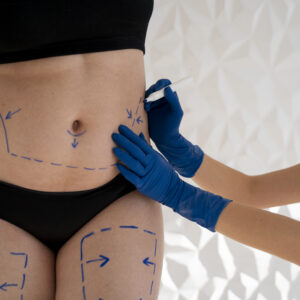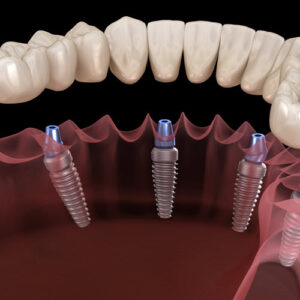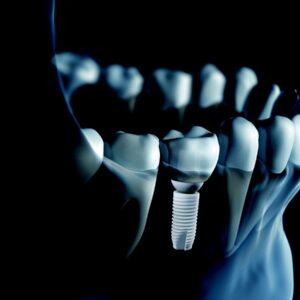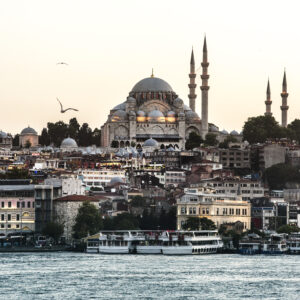Description
Familiarity with treatment
Platelet-rich plasma (PRP) therapy for the skin involves using a concentration of platelets from a person’s own blood to promote healing and rejuvenation. Here are some key points based on the search results:
- PRP therapy can be used for various purposes in skin rejuvenation, including reducing the appearance of wrinkles, improving skin texture, and promoting collagen production.
- The procedure involves drawing a small amount of blood from the patient, processing it in a centrifuge to separate the platelets and plasma, and then injecting the concentrated platelet-rich plasma into the targeted area of the skin.
- PRP therapy is sometimes referred to as the “vampire facial” due to the use of the patient’s own blood.
- The growth factors and bioactive proteins present in PRP are believed to stimulate collagen production, improve skin elasticity, and promote cell migration, leading to a more youthful appearance.
- PRP therapy has also been used for hair loss treatment, as the growth factors in PRP can stimulate hair follicles and promote hair growth.
- The procedure is generally considered safe, with minimal side effects such as temporary soreness, bruising, or redness at the injection site.
- However, there is limited scientific evidence to support the effectiveness of PRP therapy for reducing wrinkles and signs of aging.
- PRP therapy is typically performed by qualified healthcare professionals or dermatologists.
Here’s an explanation of the procedure based on the search results:
Blood Draw: The procedure begins with a small blood draw from the patient’s arm, similar to a routine blood test.
Centrifugation: The drawn blood is then processed in a centrifuge, a machine that spins at high speeds to separate the different components of the blood. This process separates the platelets and plasma from other blood cells.
Platelet-Rich Plasma Extraction: The concentrated platelet-rich plasma is extracted from the centrifuged blood. This plasma contains a higher concentration of platelets and growth factors compared to normal blood.
Preparation of the Treatment Area: The targeted area of the skin is cleaned and prepared for the PRP injection.
Injection: The platelet-rich plasma is injected into the specific area of the skin that requires treatment. The injection can be performed using a fine needle or a microneedling device, depending on the desired outcome and the healthcare professional’s preference.
Post-Treatment Care: After the injection, the patient may experience mild redness, swelling, or bruising at the injection site. These effects are usually temporary and subside within a few days. The healthcare professional may provide specific aftercare instructions, which may include avoiding certain skincare products or activities that could irritate the skin.
Who is it suitable for?
Platelet-rich plasma (PRP) therapy for the skin may be suitable for the following purposes:
Skin Rejuvenation: PRP injections are sometimes used as an anti-aging treatment for the skin. However, there is little evidence to show that PRP reduces wrinkles and other signs of aging 1.
Wound Healing: PRP therapy may speed up wound healing and can be used to aid in the healing of various skin injuries or conditions.
Facial Skin Rejuvenation: PRP therapy can be used to improve skin tone, texture, and overall appearance. It stimulates collagen production and cell migration, allowing for the elimination of lines, folds, and wrinkles 2.
Delicate and Difficult-to-Treat Areas: PRP treatment can be used in delicate areas like the skin under the eyes.
Who is it not suitable for?
Based on the search results, Platelet-rich plasma (PRP) therapy for the skin may not be suitable for everyone. Here are some factors to consider:
Pregnancy and Breastfeeding: PRP therapy is generally not recommended for pregnant or breastfeeding individuals due to the limited research available on its safety in these situations. It is important to consult with a healthcare professional for personalized advice.
Blood Disorders and Medications: Individuals with certain blood disorders or those taking blood-thinning medications may not be suitable candidates for PRP therapy. These conditions can affect the body’s ability to clot properly and may increase the risk of bleeding or bruising at the injection site.
Active Infections or Skin Conditions: PRP therapy should be avoided in areas with active infections, such as bacterial or viral skin infections. It is also not recommended for individuals with certain skin conditions, such as eczema or psoriasis, in the treatment area.
Unrealistic Expectations: It’s important to have realistic expectations about the outcomes of PRP therapy. While it may have benefits for certain conditions, the effectiveness can vary among individuals, and results may not be as dramatic as some may hope.
Individual Assessment: The suitability of PRP therapy for an individual may depend on their specific condition, medical history, and the assessment of a qualified healthcare professional or dermatologist. Consulting with a healthcare professional is essential to determine if PRP therapy is suitable for your specific needs and goals.
Advantages
Platelet-rich plasma (PRP) therapy for the skin offers several potential advantages, as mentioned in the search results:
Hair Loss Treatment: PRP injections can be effective in treating male pattern baldness and promoting new hair growth. It can also aid in the stimulation of hair growth after hair transplants 1.
Accelerated Healing: PRP therapy can accelerate the healing process of damaged tendons, ligaments, muscles, bones, and joints. It is used in orthopedics to help athletes recover more quickly after an injury.
Reduced Need for Medications: PRP injections can potentially reduce the need for opioids or over-the-counter anti-inflammatory medications. The concentrated platelets in PRP optimize the initial inflammatory response involved in healing, which may reduce the reliance on other medications 2.
Long-Lasting Results: The results of PRP therapy for the skin can be long-lasting. While the healing process starts immediately, patients may see results within three weeks, with effects lasting for up to three years. These results may include the reduction of fine lines and wrinkles 3.
Low-Risk Procedure: PRP therapy is generally considered a low-risk procedure with minimal side effects. After the injection, patients may experience some soreness and bruising at the injection site, but major side effects are rare 1.
Complications
Platelet-rich plasma (PRP) therapy for the skin is generally considered a low-risk procedure with minimal side effects, as mentioned in the search results. However, it’s important to be aware of potential complications, which may include:
Soreness and Bruising: After the PRP injection, some individuals may experience mild soreness and bruising at the injection site. These effects are usually temporary and subside within a few days.
Infection: Although rare, there is a small risk of infection at the injection site. It’s important to ensure that the treatment area is clean and sterile to minimize this risk.
Allergic Reactions: In very rare cases, individuals may experience an allergic reaction to the PRP injection. This can manifest as redness, swelling, itching, or hives. If you have a known allergy to any components of the PRP injection, it’s important to inform your healthcare professional beforehand.
No Guaranteed Results: While PRP therapy has shown promising results for certain conditions, it’s important to note that individual responses may vary. Not everyone may achieve the desired outcomes, and the effectiveness of PRP therapy for specific conditions is still an area of ongoing research.
preoperative care
Platelet-rich plasma (PRP) therapy for the skin has several potential advantages, as mentioned in the search results:
Natural Healing: PRP therapy utilizes the patient’s own blood, which is processed to concentrate platelets and growth factors. This natural approach to healing may be appealing to individuals who prefer a more holistic or autologous treatment option.
Minimal Side Effects: PRP therapy is generally considered a low-risk procedure with minimal side effects. Since the injections are created from the patient’s own blood, the risk of rejection or negative reactions is low. Common side effects may include temporary soreness and bruising at the injection site.
Accelerated Healing: The concentrated platelets and growth factors in PRP injections can help accelerate the healing process. PRP therapy is used in various fields, including orthopedics, dermatology, and sports medicine, to aid in the healing of damaged tendons, ligaments, muscles, bones, and joints.
Reduced Need for Medications: PRP injections can potentially reduce the need for opioids or over-the-counter anti-inflammatory medications. The platelet-rich plasma optimizes the initial inflammatory response involved in healing, which may reduce the reliance on other medications.
Long-Lasting Results: PRP therapy for the skin may provide long-lasting results. While individual responses may vary, some patients may experience improvements in skin tone, texture, and overall appearance for up to three years.
Postoperative care
Postoperative care for Platelet-rich plasma (PRP) therapy may vary depending on the specific procedure and the recommendations of your healthcare professional. However, here are some general considerations:
Follow Instructions: It is important to carefully follow any postoperative instructions provided by your healthcare professional. This may include specific guidelines for wound care, activity restrictions, and medication usage.
Monitor the Injection Site: Keep an eye on the injection site for any signs of infection, such as increased redness, swelling, warmth, or drainage. If you notice any concerning symptoms, contact your healthcare professional.
Avoid Touching or Scratching: It is important to avoid touching or scratching the injection site to prevent introducing bacteria or causing irritation.
Avoid Sun Exposure: Protect the treated area from excessive sun exposure, as it may increase the risk of hyperpigmentation or other complications. Use sunscreen and wear protective clothing when going outside.
Avoid Strenuous Activities: Your healthcare professional may recommend avoiding strenuous activities or exercise for a certain period after the procedure to allow for proper healing. Follow their guidance regarding activity restrictions.
Stay Hydrated: Drink plenty of fluids to stay hydrated, as it can support the healing process.
Attend Follow-up Appointments: Keep your scheduled follow-up appointments with your healthcare professional. They will assess your progress, address any concerns, and determine if any additional treatments or adjustments are needed.






Reviews
There are no reviews yet.